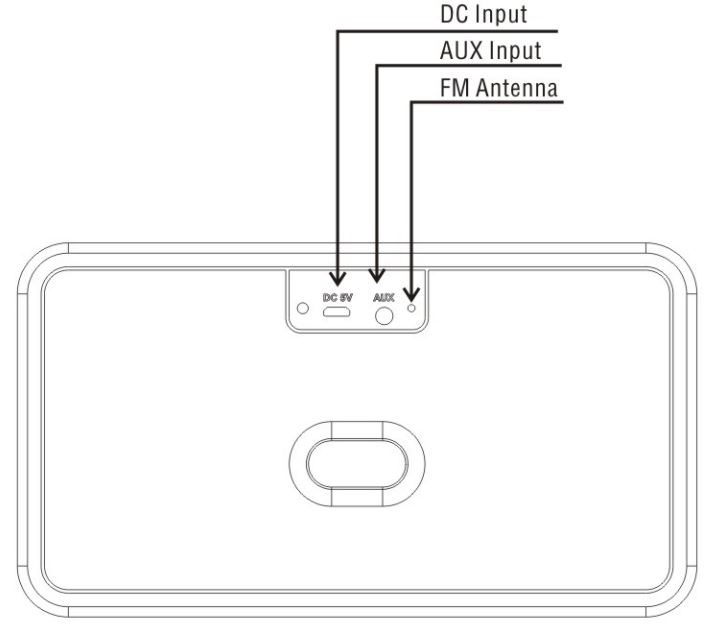Sections in this Manual
System connection diagram

NOTE: * Do not leave objects generating magnetism near the speakers.
Timing alarm
How to use the alarm
- Enter the aux mode, long press this key( ►II ) to set the timing mode. ( the red light flashes)
- In the timing mode, short press this key( ►II ) to select timed alarm. (1 hour, 2, 3 … 4 hours)
- Alarm setting confirmation: long press this key( ►II ) to confirm completion and exit.(The red light stops flashing and becomes normally on)
- When the alarm clock rings, press any key to stop the alarm
Note: the timing alarm is a one-time setting and does not repeat. If it is turned off, the timing alarm will be automatically canceled
FCC Caution:
This device complies with part 15 of the FCC Rules. Operation is subject to the following two conditions: (1) This device may not cause harmful interference, and (2) this device must accept any interference received, including interference that may cause undesired operation.
Any Changes or modifications not expressly approved by the party responsible for compliance could void the user’s authority to operate the equipment.
Note: This equipment has been tested and found to comply with the limits for a Class B digital device, pursuant to part 15 of the FCC Rules. These limits are designed to provide reasonable protection against harmful interference in a residential installation. This equipment generates uses and can radiate radio frequency energy and, if not installed and used in accordance with the instructions, may cause harmful interference to radio communications. However, there is no guarantee that interference will not occur in a particular installation. If this equipment does cause harmful interference to radio or television reception, which can be determined by turning the equipment off and on, the user is encouraged to try to correct the interference by one or more of the following measures:
- Reorient or relocate the receiving antenna.
- Increase the separation between the equipment and the receiver.
- Connect the equipment to an outlet on a circuit different from that to which the receiver is connected.
- Consult the dealer or an experienced radio/TV technician for help.
The device has been evaluated to meet the general RF exposure requirements. The device can be used in portable exposure conditions without restriction.

